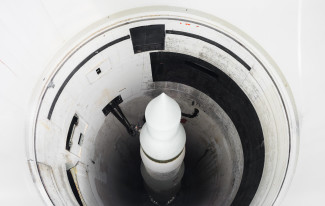
Johns Hopkins UniversityEst. 1876
America’s First Research University
The American Lab

Many people have asked me why I wrote the book and why I chose the title, The American Lab. Much of the motivation arose out of the events associated with the Lawrence Livermore National Laboratory’s 50th anniversary in 2002, the last major event that I organized as Director of the Laboratory. The year preceding the final anniversary celebration was filled with retrospective looks at all the major areas in which the Lab had worked -- nuclear weapons of course, but also lasers, energy, environment, basic science, and even biology. In nearly every field the Lab had contributed significantly, and in some cases changed the landscape. It also became clear that Livermore was almost alone among the large national labs in having no comprehensive history of its evolution and achievements. There were many books about Los Alamos, histories of Sandia, Brookhaven, the Jet Propulsion Lab and several others but nothing on Livermore other than newspaper-like summaries on the occasion of various anniversaries.
So after the anniversary events had faded away I began to explore the limited written record and also to take oral histories from people who had been at the Lab in its early years. A first insight was the very different roles of the two founders of the Lab, Ernest Lawrence and Edward Teller. Although the catalyst for the Lab’s formation was clearly Teller and his passion for nuclear weapons, the functional Lab was an incarnation of Lawrence’s University of California Radiation Lab at Berkeley, and it was officially a second site of UCRL for its first twenty years. The director was Lawrence’s handpicked choice, Herb York, and virtually everyone else came from UCRL -- except Teller himself. And, other than a few senior physicists, much of the rest of the staff had joined UCRL from small colleges in the heartland, and were focused on building things, not on academic research or fancy titles. It was a start-up company, and it reflected Lawrence’s very American character with an emphasis on team projects and technology, not on academic science or peer-reviewed publications. It felt then -- and to some extent still does -- like an American Lab, not a traditional scientific institution -- and hence the title.
After a relatively rocky start, the Lab made its great breakthrough in 1956, with the development of the nuclear weapon approaches that enabled submarine-launched ballistic missiles on the Polaris submarines, an invention that changed the course of the Cold War. Since submarines could not be easily detected, Polaris provided a guaranteed nuclear response to any first strike by an adversary, thus producing the détente that prevailed throughout the several decades of the Cold War. The same nuclear ideas were then transferred to land-based ICBMs, and by the end of the 1960s Livermore and Los Alamos had become comparable nuclear weapons laboratories in their national impact.

The 1970s and 1980s were filled with many energy projects, with Livermore leading the world in laser fusion and being an active participant in magnetic fusion. Each had the goal of delivering fusion energy as an unlimited and reasonably clean future energy source, and both are still trying to achieve that goal today. Laser fusion had the additional feature that it could simulate nuclear explosions so it also had great value for the nuclear weapons world. Other important scientific excursions were a major role in the first climate modeling simulations and as a co-founder of what would become the Human Genome Project.
Many readers will also be interested in my description of the Lab’s effort in Star Wars, the Strategic Defense Initiative, in which the Lab played a leading role. Classification restrictions limit that discussion, but I am able to talk about the personal drama between Edward Teller and the Lab staff that received so much international attention.
After the Cold War ended in roughly 1990, there was an intense national debate on the future of the nuclear weapons program. The book recounts the significant events in that battle and its ultimate resolution in Vic Reis’s development of the DOE stockpile stewardship program, an approach to validate the stockpile without nuclear testing. Livermore played a prominent part in that evolution as supercomputers and laser fusion replaced some of the roles previously played by the nuclear tests. Then there was the Chinese spy firestorm in around 2000, epitomized by the Wen Ho Lee arrest and subsequent congressional investigations. A major outcome was the imposition of greatly increased security restrictions at all the national labs with a clear change in their operational practices. This also led to the demand for competition and private participation in the management structure for the national labs, and the book ends when sole University of California management of Livermore (and Los Alamos) was replaced by a public-private consortium in 2008.
C. Bruce Tarter is a theoretical physicist who began work at Lawrence Livermore Laboratory as a researcher in 1967. Presently director emeritus, he served as the Lab’s director from 1994 to 2002. He is the author of The American Lab: An Insider’s History of the Lawrence Livermore National Laboratory.


